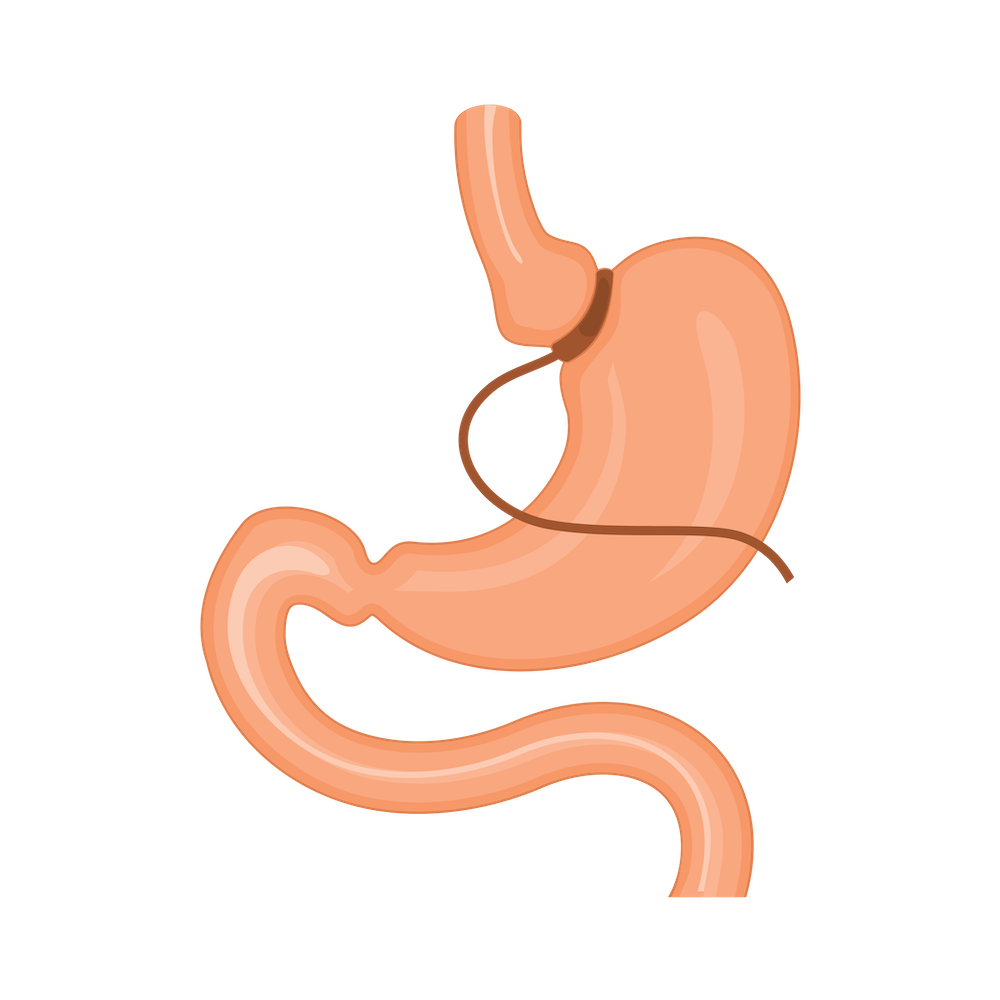Bariatric Procedure
Lap Band Gastric Band
Lap Band | Gastric Band
Gastric Band surgery (Laparoscopic Adjustable Gastric Banding) works by limiting the amount of food the stomach can hold after eating. This results in a feeling of being full after eating only a small amount of food. The procedure is done by placing an inflatable band around the upper portion of the stomach. The band is connected to an access port placed in the abdomen. The access port allows a physician to inject saline into the inflatable inner band ring which creates a small stomach pouch. This new, small upper stomach reduces the amount of food and drink that can be consumed, and a narrowed stomach outlet increases the length of time it takes the stomach to become empty.
Gastric banding is not as successful at achieving excess weight loss as other bariatric procedures. The average range is approximately 40% – 60% weight and that weight loss does not tend to last over time.
Gastric Band is performed to help you lose excess weight and reduce your risk of weight related health issues. Those included but are not limited to:
- Gastroesophageal reflux disease
- Heart disease
- High cholesterol
- High blood pressure
- Type 2 diabetes
- Stroke
- Obstructive sleep apnea
- Cancer
- Infertility
It is important for you to know that making permanent changes to your diet and lifestyle will be needed to maximize your weight loss. With smart food choices, regular exercise and good eating habits, patients who have had a gastric band should enjoy and maintain good weight loss.
Price: Pending
“Between a very knowledgeable surgeon and caring staff, I wouldn’t hesitate to recommend Dr. Juan and his team to anyone.”
Risks
As with any major surgery, Gastric Band does pose potential health risks. Those risks can include, but are not limited to:
- Excessive bleeding
- Adverse reactions to anesthesia
- Blood clots
- Infection
- Lung or breathing problems
- Injury to the stomach or other organs
Longer term risks and complications of gastric band can include:
- Band slippage
- The band can erode into the stomach
- The port can shift requiring follow-up surgery
- Infection at the port site
- Bowel obstruction
- Hernias
- Gallstones
- Low blood sugar (hypoglycemia)
- Stomach perforation
- Malnutrition
- Vomiting
- Heartburn
- Gastritis
- Gastrointestinal scarring
- Esophageal dilation
- Ulcers
Very rarely, complications of (insert procedure) can be fatal.

